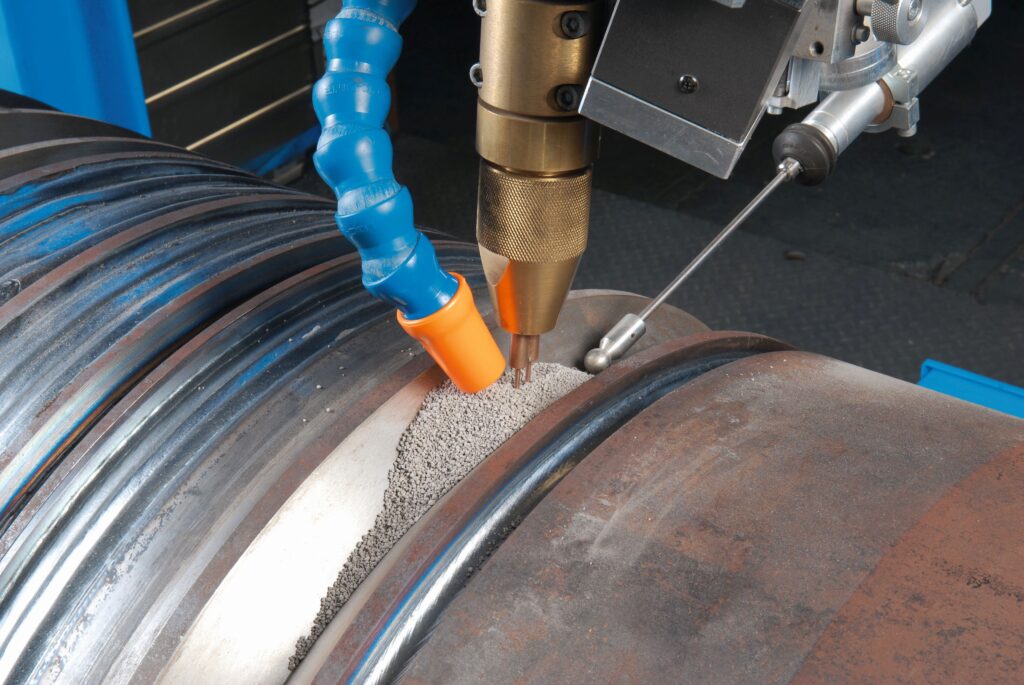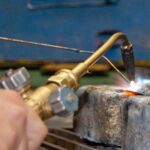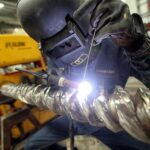In Submerged-arc Welding (SAW), the weld arc is shielded by a granular flux consisting of lime, silica, manganese oxide, calcium fluoride and other compounds. The flux is fed into the weld zone from a hopper by gravity flow through a nozzle. The thick layer of flux completely covers the molten metal. Covered flux prevents spatter and sparks and suppresses the intense ultraviolet radiation and fumes characteristic of the shielded metal-arc welding (SMAW) process. The flux acts as a thermal insulator by promoting deep penetration of heat into the workpiece.
The consumable electrode is a coil of bare round wire 1.5 to 10 mm in diameter, consumable electrode is fed automatically through a tube. Electric currents typically range from 300 to 2000A. The power supplies usually are connected to standard single-phase or three-phase power lines with a primary rating up to 440V.

Schematic illustration of the submerged-arc welding equipment.
The flux is gravity fed, the Submerged-arc welding process is limited largely to welds in a flat or horizontal position having a backup piece. Circular welds can be made on pipes and cylinders-provided that they are rotated during welding. As image shows, the unfused flux is recovered, treated and reused. Submerged-arc welding is automated and is used to weld a variety of carbon and alloy steel and stainless-steel sheets or plates at speeds as high as 5 m/min. The quality of the Weld is very high with good toughness, ductility and uniformity of properties. The Submerged-arc welding process provides very high welding productivity, depositing 4 to 10 times the amount of weld metal per hour as the shielded metal-arc welding process.
The weld made by Submerged-arc welding have high strength and ductility with low Hydrogen and Nitrogen content. It is suitable for welding low alloy steel, high tensile steel, LC and MC steels, high resisting steel, corrosion resistant steel, high strength steel and many of non-ferrous alloys.
§ Smooth welds of high strength and ductility with low H2 and N2 content.
§ Because of high current, high metal deposition, high welding speeds and good penetration are achieved.
§ Due to high speeds less distortion will occur.
§ Elimination of fumes and spatter.
§ Absence of visible arc and ease of penetration.
§ During welding process arc is not visible, judging the welding progress is difficult and so tools like jigs, fixtures and guides are required.
§ Pre-placing of flux may not always possible.
§ This welding process is limited to flat position.
§ Flux is subjected to contamination that may cause weld porosity.
§ Chlorine, Aluminium, Magnesium, Lead, Zinc can not be welded.


